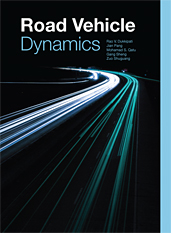Technical Paper
Transient Characteristics of Cold Start Emissions from a Two-Stage Direct Injection Gasoline Engines Employing the Total Stoichiometric Ratio and Local Rich Mixture Start-up Strategy
2012-04-16
2012-01-1068
To improve the cold start performance and to reduce the misfire occurrence at cold start, the start-up strategy of total stoichiometric ratio combined with local rich mixture was applied in the study. The effect of injection strategy (the 1st injection timing, 2nd injection timing, 1st and 2nd fuel injection proportion and ignition timing) on the cold start HC emissions in the initial 10 cycles were investigated in a Two stage direct injection (TSDI) gasoline engine. The transient HC and NO emissions in the initial 10 cycles were analyzed, when the fuels are injected in the only 1st cycle and in the followed all cycles. The transient misfiring HC emissions were compared between the single and two-stage injection modes. In addition, the unburned HC (UBHC) emissions in the 1st cycle are compared among the TSDI engine, Gasoline direct injection (GDI) engine, Port fuel injection (PFI) engine and Liquefied petroleum gaseous (LPG) engine at the stoichiometric ratio.


